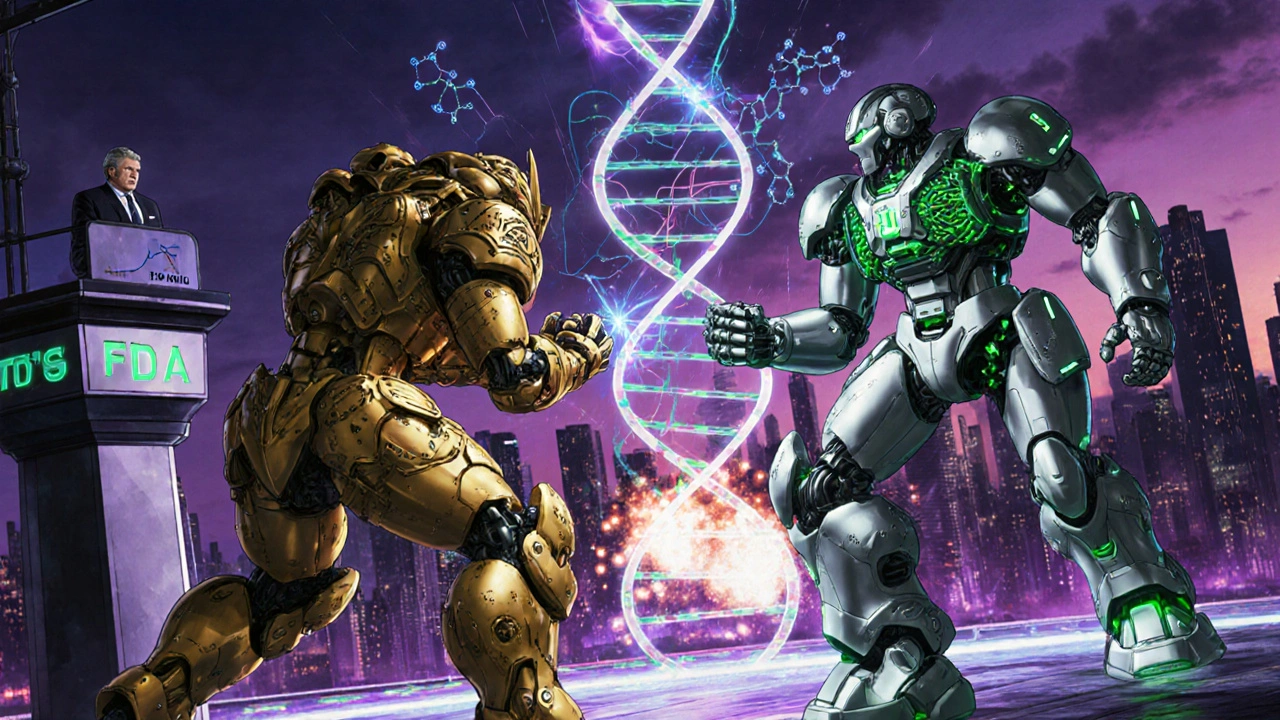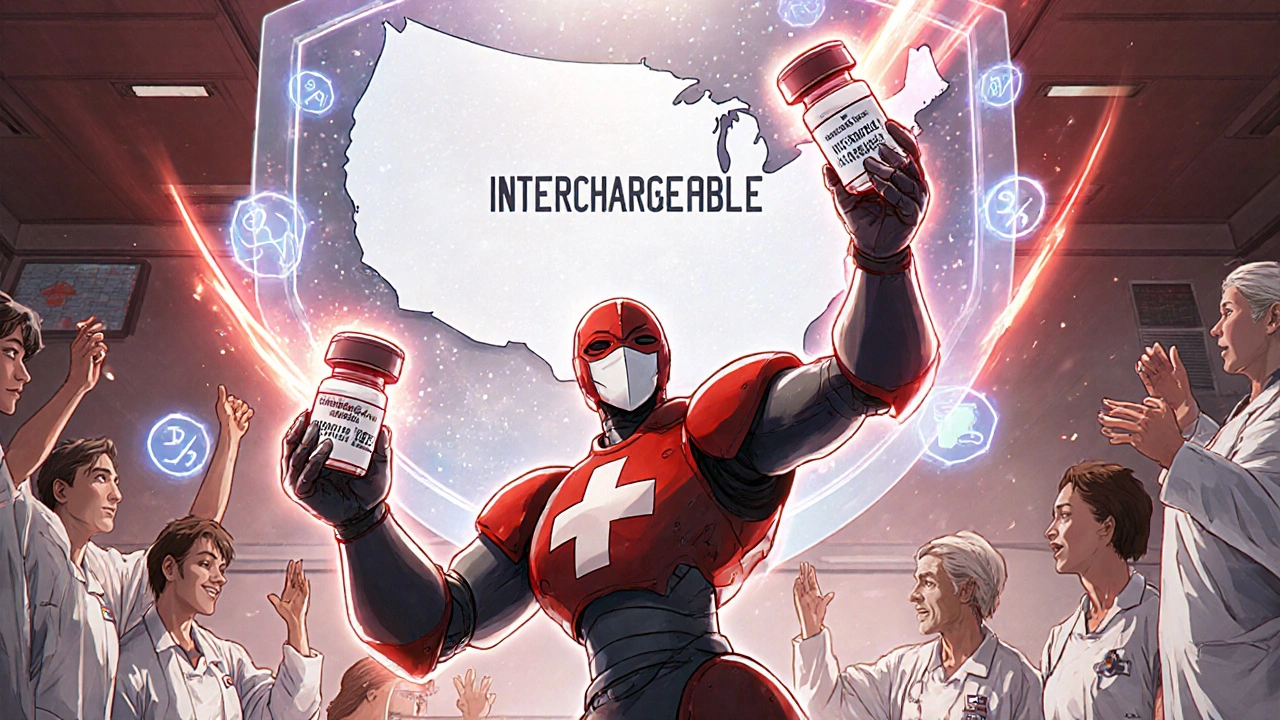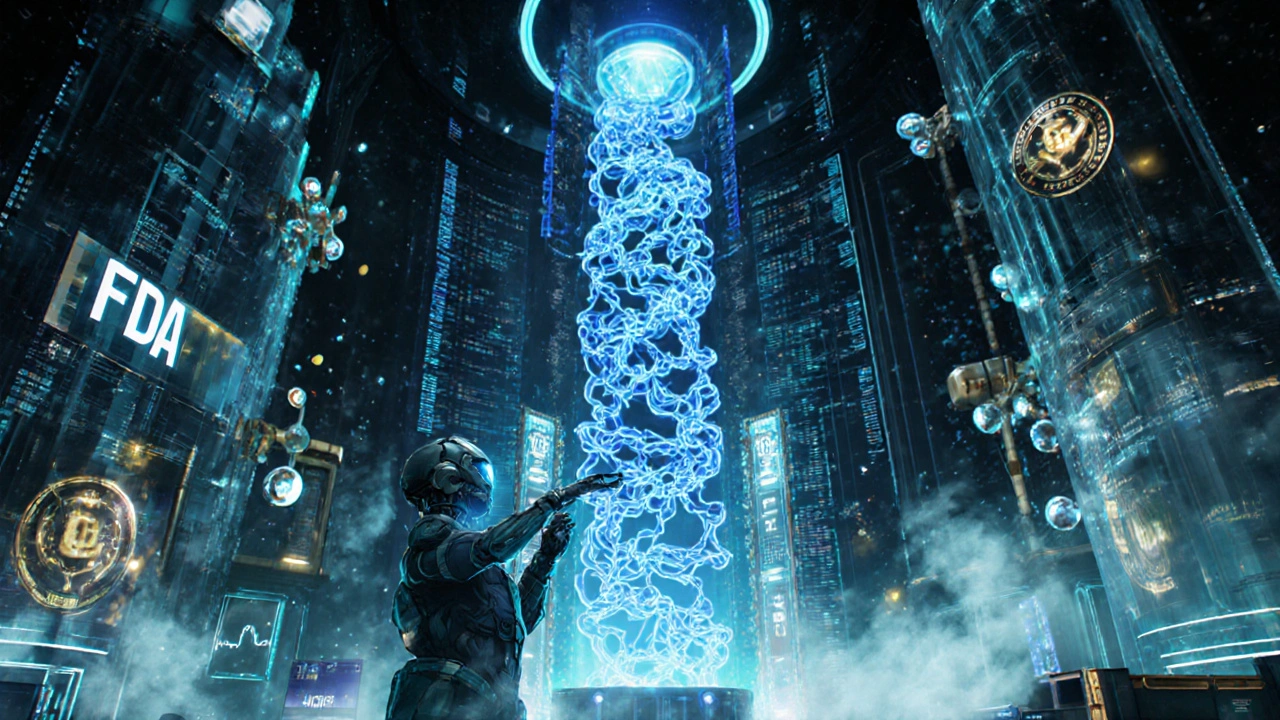The U.S. Food and Drug Administration (FDA) doesn’t treat biosimilars like generic pills. That’s the first thing to understand. While a generic version of ibuprofen is chemically identical to the brand-name version, a biosimilar isn’t a copy-it’s a highly similar version of a complex biologic drug. These biologics are made from living cells, not chemicals. They treat serious conditions like rheumatoid arthritis, cancer, Crohn’s disease, and diabetes. And because they’re made by living systems, no two batches are exactly alike-even from the same manufacturer. So when a company wants to bring a biosimilar to market, the FDA doesn’t just check a label. They run a science-heavy, multi-layered review that’s unlike anything used for traditional generics.
How the FDA Defines Biosimilarity
The legal foundation for biosimilars comes from the Biologics Price Competition and Innovation Act (BPCIA) of 2010. Under Section 351(k) of the Public Health Service Act, a biosimilar must be “highly similar” to its reference product, with no clinically meaningful differences in safety, purity, or potency. That’s not a vague phrase. It means the FDA demands proof across three areas: analytical studies, nonclinical data, and clinical data. But here’s what changed in October 2025: the FDA no longer automatically requires a full clinical trial comparing the biosimilar to the original drug for effectiveness.Before this update, companies had to run expensive, multi-year studies showing the biosimilar worked just as well in patients. Now, if the product is well-characterized-like a monoclonal antibody used for cancer or autoimmune diseases-and the relationship between its structure and how it works in the body is well understood, the FDA says analytical data alone might be enough. Think of it this way: if you can prove with advanced lab tools that the biosimilar’s shape, charge, and molecular behavior are nearly identical to the original, you might not need to give it to 500 patients just to see if it works the same.
The New Science Behind Approval
The October 2025 draft guidance from the FDA is a game-changer. It leans heavily on modern analytical technology. Companies now use mass spectrometry, chromatography, and bioassays to measure over 200 quality attributes of the molecule. These aren’t simple tests. They’re like forensic science for proteins. You’re looking at things like glycosylation patterns-tiny sugar molecules attached to the protein-that can affect how the drug behaves in the body. If those patterns match within strict limits, and if pharmacokinetic (PK) studies show the drug enters and leaves the bloodstream at the same rate, the FDA considers that strong evidence of biosimilarity.This shift cuts development time from 8-10 years down to 5-7 years and reduces costs from $100-300 million to $50-150 million per product. That’s huge. It opens the door for more companies to enter the market, especially smaller biotechs that couldn’t afford the old process. But it’s not a free pass. The FDA still requires rigorous data. And if the molecule is more complex-like an antibody-drug conjugate, where a toxin is attached to a targeting antibody-the agency still asks for clinical studies. The science isn’t there yet to fully replace human trials for those.
Interchangeability: What It Really Means
Interchangeability is the holy grail for biosimilars. It means a pharmacist can swap the biosimilar for the brand-name drug without asking the doctor. In the past, companies had to run “switching studies,” where patients alternated between the reference product and the biosimilar multiple times to prove no extra risk existed. That added years and millions to development.In October 2025, the FDA signaled a major shift. Commissioner Marty Makary said at a conference: “Every biosimilar should have the designation of interchangeable.” That’s not policy yet-it’s a statement of intent. The agency still requires formal applications for interchangeability, and they’ve approved two denosumab biosimilars with that status. But the message is clear: the FDA believes the scientific bar for interchangeability is too high and doesn’t reflect reality. Critics argue that removing the distinction without a law change could confuse doctors and patients. Some pharmacists are already frustrated. Thirty-four states still have laws that block automatic substitution unless the FDA has officially labeled the product interchangeable. So even if the FDA says “yes,” state rules can say “no.”

How It Compares to Europe
The European Medicines Agency (EMA) has been approving biosimilars since 2006 and has over 100 on the market. Their process has always been more streamlined. They typically require just one clinical study focused on pharmacokinetics and pharmacodynamics-not full efficacy trials. The FDA’s old rules were stricter, which is why the U.S. market lagged. In Europe, biosimilars make up 67% of the market for eligible biologics. In the U.S., it’s only 23%. The 2025 guidance is the FDA’s attempt to catch up. The new approach is now much closer to the EMA’s. That means more global alignment, fewer redundant studies, and faster access for U.S. patients.Who’s Making Biosimilars and Who’s Using Them
The big players are Sandoz, Pfizer, and Amgen, with 17, 12, and 10 approved biosimilars respectively. But smaller companies like Viatris and Biocon are gaining ground. Still, only 12 of the 76 approved biosimilars came from firms with fewer than 100 employees. Why? Because setting up the analytical labs needed to meet FDA standards costs millions. You need teams of scientists with expertise in protein chemistry, bioinformatics, and regulatory strategy. It’s not something a startup can do overnight. The learning curve is 12-18 months just to build the right quality control systems.On the other side, hospitals are embracing biosimilars. Mayo Clinic reported a 37% drop in biologic drug costs after switching to biosimilars for cancer treatments-saving $18 million a year. Other health systems are following. Eighty-nine percent of U.S. hospitals now include biosimilars in their formularies. But patient awareness is low. Only 32% of people know what a biosimilar is. And while 78% of patients using them for arthritis say they’re satisfied, 41% initially worried about safety. Most of those fears faded after talking to their doctor.

Challenges and Controversies
The biggest roadblock isn’t science-it’s money and law. Patent litigation delays biosimilar entry in 68% of cases, according to the FTC. Big drugmakers extend patents with minor tweaks to their original drugs, creating legal barriers that can hold up a biosimilar for years. Even when approved, some insurers still favor the original brand. And while the FDA says all biosimilars should be interchangeable, Congress hasn’t changed the law. That creates a legal gray zone. Pharmacies might be ready to switch, but doctors and patients may hesitate because the label doesn’t say “interchangeable.”There’s also concern about long-term effects. Some experts, like Dr. Paul Baldrick, warn that subtle differences might only show up after years of use in chronic conditions. The FDA counters that modern analytical tools are more sensitive than ever and can detect those differences before a single patient gets a dose. So far, data from over 76 approved biosimilars shows no safety issues linked to the approval process.
What’s Next
The FDA’s draft guidance is open for public comment until January 27, 2026. Final rules are expected by June 2026. Analysts predict annual approvals could jump from 8-10 to 15-20. The U.S. biosimilar market, worth $18.7 billion in 2024, could hit $62.3 billion by 2029. That’s a 27% annual growth rate. If patent barriers fall and interchangeability becomes standard, the savings could reach $150 billion a year.For patients, this means more affordable options for life-changing treatments. For providers, it means fewer administrative hurdles. For the system, it means billions saved. But the path forward depends on aligning science, law, and perception. The FDA has done its part. Now it’s up to Congress, insurers, doctors, and patients to catch up.
Are biosimilars the same as generic drugs?
No. Generic drugs are chemically identical copies of small-molecule drugs, like aspirin or metformin. Biosimilars are copies of large, complex biologic drugs made from living cells. Because they’re produced by biological processes, they can’t be exactly replicated. Biosimilars are “highly similar” but not identical. The FDA requires more testing for biosimilars than for generics.
Why are biosimilars cheaper than the original biologics?
Biologics cost $50,000-$100,000 per patient per year. Developing them takes over a decade and costs billions. Biosimilars don’t need to repeat all the early clinical trials because they build on the original drug’s safety data. With the FDA’s 2025 update, development costs have dropped to $50-150 million-about a third of what they used to be. Lower development costs mean lower prices, and competition drives them down further.
Can pharmacists automatically substitute a biosimilar for the brand-name drug?
Only if the FDA has granted it an “interchangeable” designation. Even then, state laws vary. Thirty-four states still require the prescriber to specifically authorize the switch. The FDA now believes all biosimilars should be interchangeable, but without a change in federal law, pharmacists can’t always swap them without a doctor’s approval.
How many biosimilars has the FDA approved so far?
As of late 2025, the FDA has approved 76 biosimilars. These treat conditions including cancer (like trastuzumab and bevacizumab), autoimmune diseases (like adalimumab and infliximab), diabetes, osteoporosis, and Crohn’s disease. More are expected each year, especially after the October 2025 guidance streamlined the process.
Do biosimilars work as well as the original biologics?
Yes. Data from clinical use and post-market monitoring show biosimilars have comparable effectiveness and safety to their reference products. A September 2025 Arthritis Foundation survey found 78% of patients using biosimilars were satisfied with their treatment. In oncology, hospital systems report no difference in outcomes when switching from brand-name drugs to biosimilars.
What’s the biggest barrier to biosimilar adoption today?
Patent litigation. Even after FDA approval, brand-name drugmakers often sue to delay market entry. The FTC found 68% of approved biosimilars face legal challenges that push back availability by years. The other big hurdle is low patient awareness-only 32% know what a biosimilar is-and inconsistent state substitution laws.
